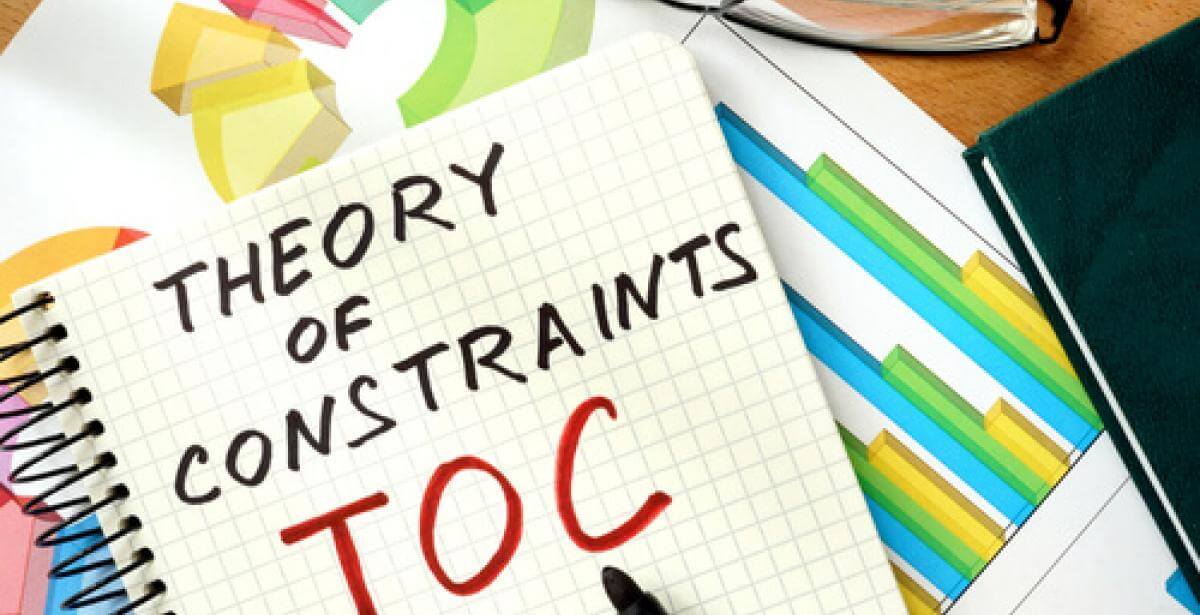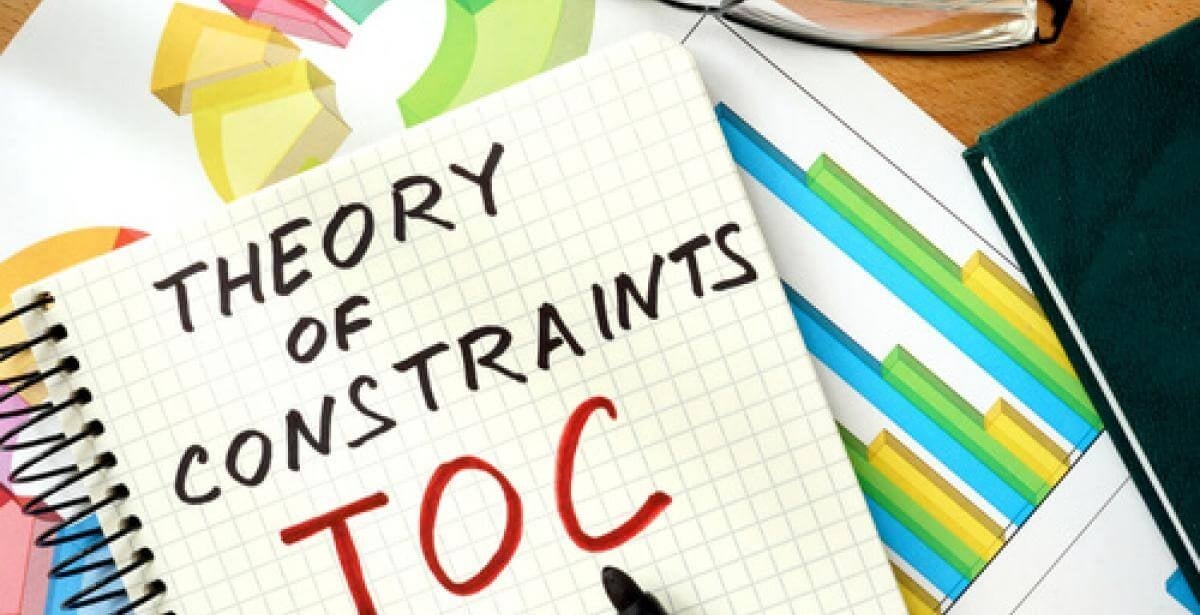
5 Steps to Understanding and Applying the Theory of Constraints
The majority of information regarding the Theory of Constraints should be attributed to Vorne Industries and their site LeanProduction.com, you can learn more about the Theory of Constraints, get a visual roadmap and other free tools there.
“The Theory of Constraints is a methodology for identifying the most important limiting factor (i.e. constraint) that stands in the way of achieving a goal and then systematically improving that constraint until it is no longer the limiting factor. In manufacturing, the constraint is often referred to as a bottleneck. The Theory of Constraints takes a scientific approach to improvement. It hypothesizes that every complex system, including manufacturing processes, consists of multiple linked activities, one of which acts as a constraint upon the entire system (i.e. the constraint activity is the “weakest link in the chain”).” There are three components to the Theory of Constraints: The Five Focusing Steps, The Thinking Processes, and Throughput Accounting.
The Five Steps: A Methodology for Identifying and Eliminating Constraints
Embedded in the Theory of Constraints (TOC) is the notion of prioritizing improvement activities. The top priority is always the current constraint. In environments where there is an urgent need to improve, TOC offers a highly focused methodology for creating rapid improvement.
The Five Steps
- Identify the System Constraint: The part of a system that constitutes its weakest link can be either physical or a policy.
- Decide How to Exploit the Constraint: Goldratt instructs the change agent to obtain as much capability as possible from a constraining component, without undergoing expensive changes or upgrades. An example is to reduce or eliminate the downtime of bottleneck operations.
- Subordinate Everything Else: The non-constraint components of the system must be adjusted to a setting that will enable the constraint to operate at maximum effectiveness. Once this has been done, the overall system is evaluated to determine if the constraint has shifted to another component. If the constraint has been eliminated, the change agent jumps to step five.
- Elevate the Constraint: Elevating the constraint refers to taking whatever action is necessary to eliminate the constraint. This step is only considered if steps two and three have not been successful. Major changes to the existing system are considered at this step.
- Return to Step One, But Beware of "Inertia": The Thinking Processes: Tools for Analyzing and Resolving Problems
In TOC, every complex problem begins with a core conflict. Simply put, the Thinking Processes is based on cause-and-effect. Goldratt writes that this enables “breakthrough situations by identifying, challenging and correcting unexamined assumptions.” At its most basic level “TOC provides managers with a set of tools that guide the user to find answers to the basic questions relating to change, namely: What to change? What to change to? And, how to cause the change?”
Christian Hohmann, Senior Manager with Marris Consulting relies on TOC along with concepts from Lean and Six Sigma to help his clients “boost their operational performance and new product development.” Hohmann matches each tool with the basic questions about improvement. His table illustrates the flow of the process.
Tools
- Current Reality Tree
- Conflict Resolution Diagram
- Future Reality Tree
- Prerequisite Tree
- Transition Tree

Throughput Accounting: A Method for Measuring Performance and Guiding Management Decisions
Throughput Accounting is another measurement and decision-making tool within Goldratt’s TOC. Throughput Accounting “changes the way an organization thinks internally about revenue recognition, costs and profitability and therefore changes the figures used for decision making. Throughput Accounting essentially changes the Management Accounting.”
Many of the distortions that exist in traditional management accounting systems are overcome with Throughput Accounting. “These distortions arise because traditional management accounting tries to apply the same measures that are used to judge a whole system/organization (profit and return on investment) to day-to-day decisions by dividing the system into sub-systems and then into activities.” Under Goldratt’s TOC approach, three measures are used for decision making in this order:
- Throughput (T)
- Investment (I)
- Operating Expense (OE)
Throughput is the money generated from sales – which means the value of sales less the TVC – Truly Variable Cost – only the cost of making and selling additional units.
Investment is the money tied up in the system.
Operating Expense is all the money (other than TVC) incurred to turn investment into sales – this includes wages etc.
“Any decision can be made based on evaluating the effect of the proposal on T, I & OE in that order. Under traditional management accounting, the cost of any proposal is usually the first and sometimes only consideration – leading to poor local decisions.”
Benefits of Throughput Accounting
Throughput Accounting focuses on identifying, measuring, and managing constrained resources. “By helping managers efficiently use constrained resources, throughput accounting helps a firm maximize productivity and profitability.”
The benefits of adopting throughput accounting include:
- A more focused information system that helps managers prioritize decisions around maximizing efficiency
- Accounting processes that are more in tune with the needs of operations managers
- Simpler approach to costing products
- Clearer understanding of the contribution that sub-systems make to the system as a whole
- A more realistic reporting of the effectiveness of the system as a whole in relation to its goal – making money now and in the future
The Theory of Constraints’ tools and strategies offer companies a way to initiate a systematic and critical analysis of logistics with an emphasis on effective decision-making. The sooner constraints are identified, the sooner corrective action can take place resulting in companies maintaining production and thus their competitive edge.
Kettering Online's Innovative Master's Degree in Lean Manufacturing
The only program of its kind in the United States, Kettering University's online Lean Manufacturing master's degree program teaches the modern manufacturing process knowledge and Lean Six Sigma skills needed to improve quality output, streamline processes and reduce waste
The lean program at KUO truly enhances your skill set by learning to think lean. Lean thinking is a mindset and developing them here at KUO will promote you to apply it and make some strides in your career. The resources and learning materials have been revised and updated to include the latest research and methods. The methodologies learned will help you to bring about better efficiencies to your processes. The faculty are all well versed and continue to apply lean methodologies at their work and life to stay on a path of continuous improvement.

